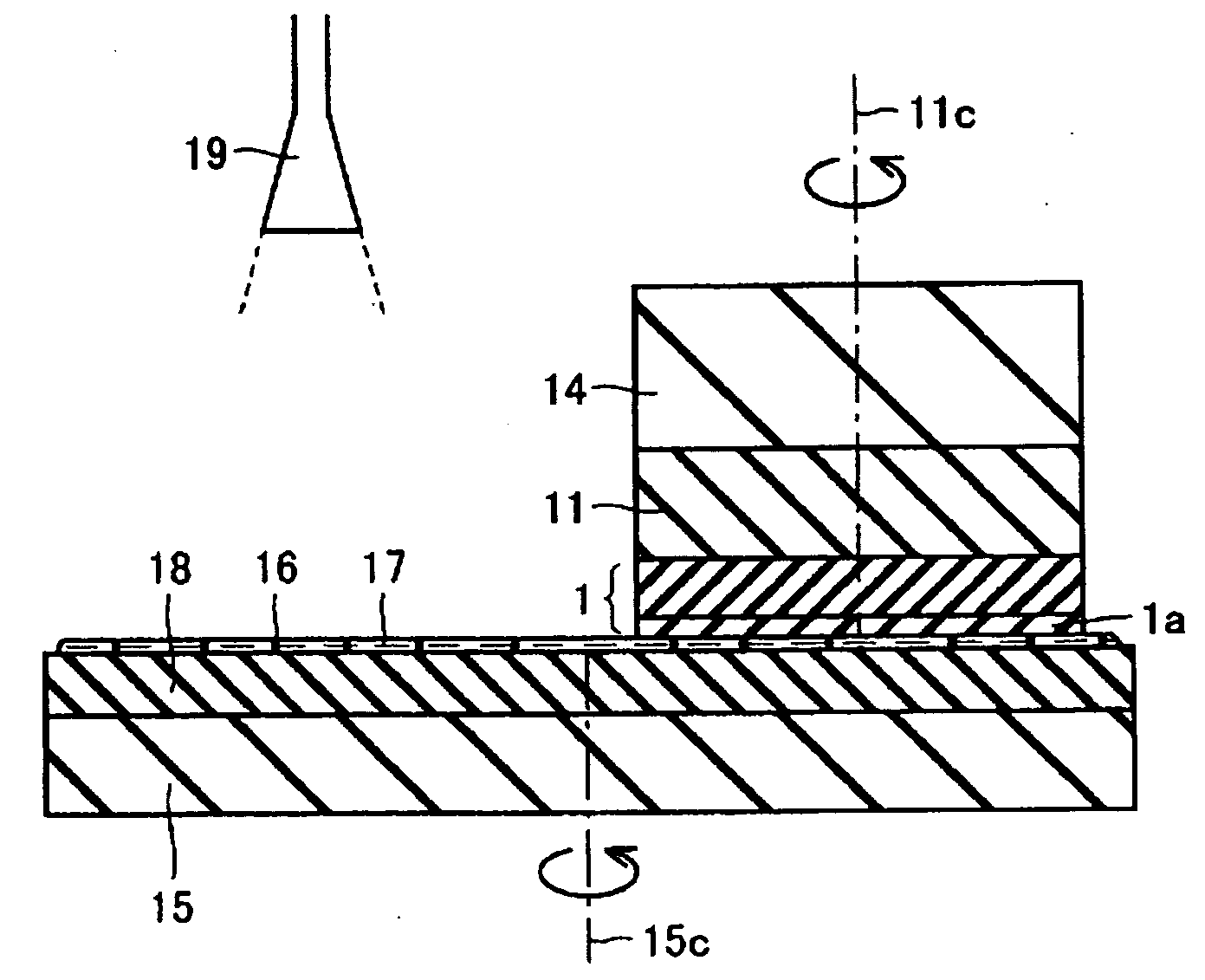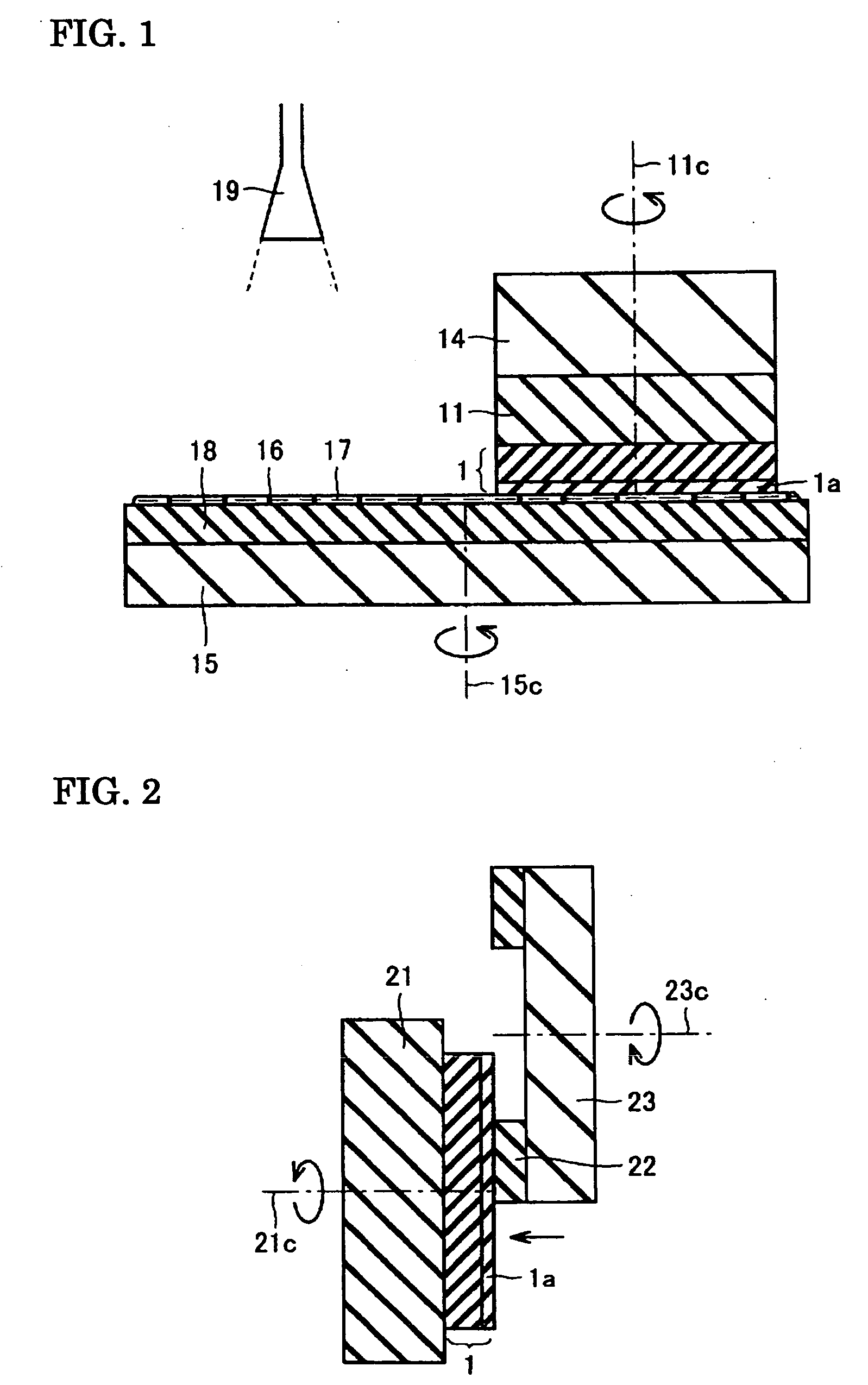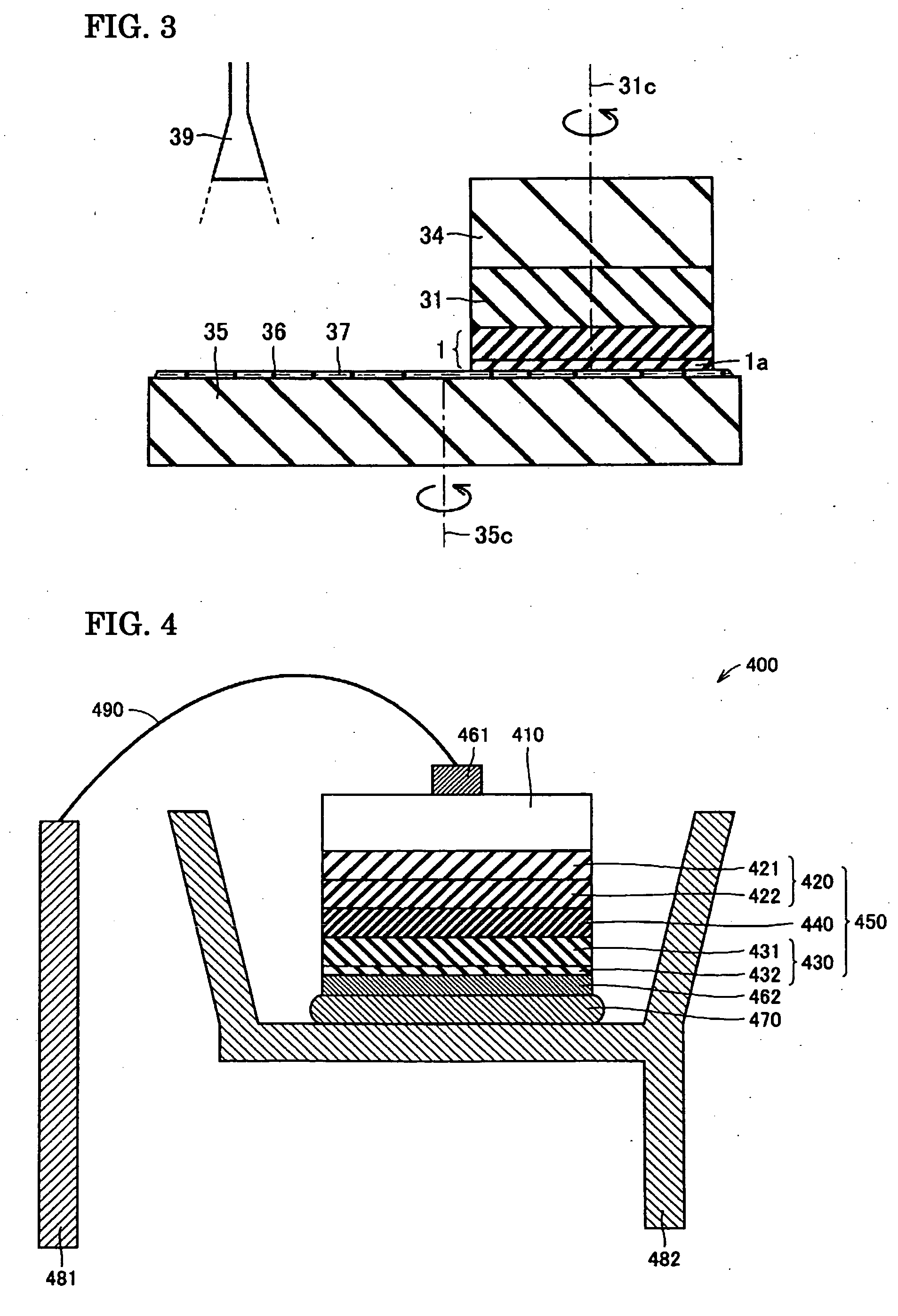Method of surface treatment of group III nitride crystal film, group III nitride crystal substrate, group III nitride crystal substrate with epitaxial layer, and semiconductor device
a technology of nitride crystal film and surface treatment method, which is applied in the direction of after-treatment details, manufacturing tools, lapping machines, etc., can solve the problems of difficult to further reduce the surface roughness, the crystallinity decrease, and the inability to form satisfactory quality semiconductor devices on such a substrate. , to achieve the effect of efficient production and efficient formation
- Summary
- Abstract
- Description
- Claims
- Application Information
AI Technical Summary
Benefits of technology
Problems solved by technology
Method used
Image
Examples
example 1
[0058] This example describes the case where a surface of a GaN crystal film grown by an HVPE method is mechanically lapped and then further polished.
[0059] (1-1) Growth of GaN Crystal Film
[0060] A GaN crystal film was grown by an HVPE method using a GaAs crystal substrate with a diameter of 50 mm as a base substrate. A boat containing metallic Ga was charged in a reacting furnace at atmospheric pressure and was heated to 800° C. A mixed gas of HCl gas and a carrier gas (H2 gas) was introduced into the boat to generate GaCl gas and a mixed gas of HN3 gas and a carrier gas (H2 gas) was introduced into the reacting furnace, thereby allowing to react the GaCl gas and the NH3 gas. Thus, a GaN crystal film having a thickness of 3 mm was grown on the base substrate (GaAs crystal substrate) disposed in the reacting furnace. In this step, the growth temperature of the GaN crystal film was 1,050° C., the partial pressure of the HCl gas in the reacting furnace was 2 kPa, and the partial pre...
example 2
[0072] A surface treatment of a GaN crystal substrate was performed and an epitaxial layer was formed as in Example 1 except that an aqueous nitric acid solution containing colloidal silica (SiO2) having a grain size of 0.1 μm and serving as the abrasive grains 16 and trichloroisocyanuric acid (hereinafter referred to as TCIA) serving as an oxidizing agent wherein the pH was adjusted to 2.4 and the oxidation-reduction potential was adjusted to 1,420 mV was used as the polishing liquid 17. Table I summarizes the results.
examples 3 to 5
[0073] A surface treatment of a GaN crystal substrate was performed and an epitaxial layer was formed as in Example 1 except that an aqueous nitric acid solution containing Al2O3 particles serving as the abrasive grains 16 and TCIA serving as an oxidizing agent wherein the pH was adjusted to 3.5 and the oxidation-reduction potential was adjusted to 1,200 mV was used as the polishing liquid 17. The abrasive grains 16 having a grain size of 0.5 μm (Example 3), 1.0 μm (Example 4), or 2.0 μm (Example 5) were used. Table I summarizes the results.
PUM
| Property | Measurement | Unit |
|---|---|---|
| grain size | aaaaa | aaaaa |
| thickness | aaaaa | aaaaa |
| surface roughness | aaaaa | aaaaa |
Abstract
Description
Claims
Application Information
 Login to View More
Login to View More - R&D
- Intellectual Property
- Life Sciences
- Materials
- Tech Scout
- Unparalleled Data Quality
- Higher Quality Content
- 60% Fewer Hallucinations
Browse by: Latest US Patents, China's latest patents, Technical Efficacy Thesaurus, Application Domain, Technology Topic, Popular Technical Reports.
© 2025 PatSnap. All rights reserved.Legal|Privacy policy|Modern Slavery Act Transparency Statement|Sitemap|About US| Contact US: help@patsnap.com



